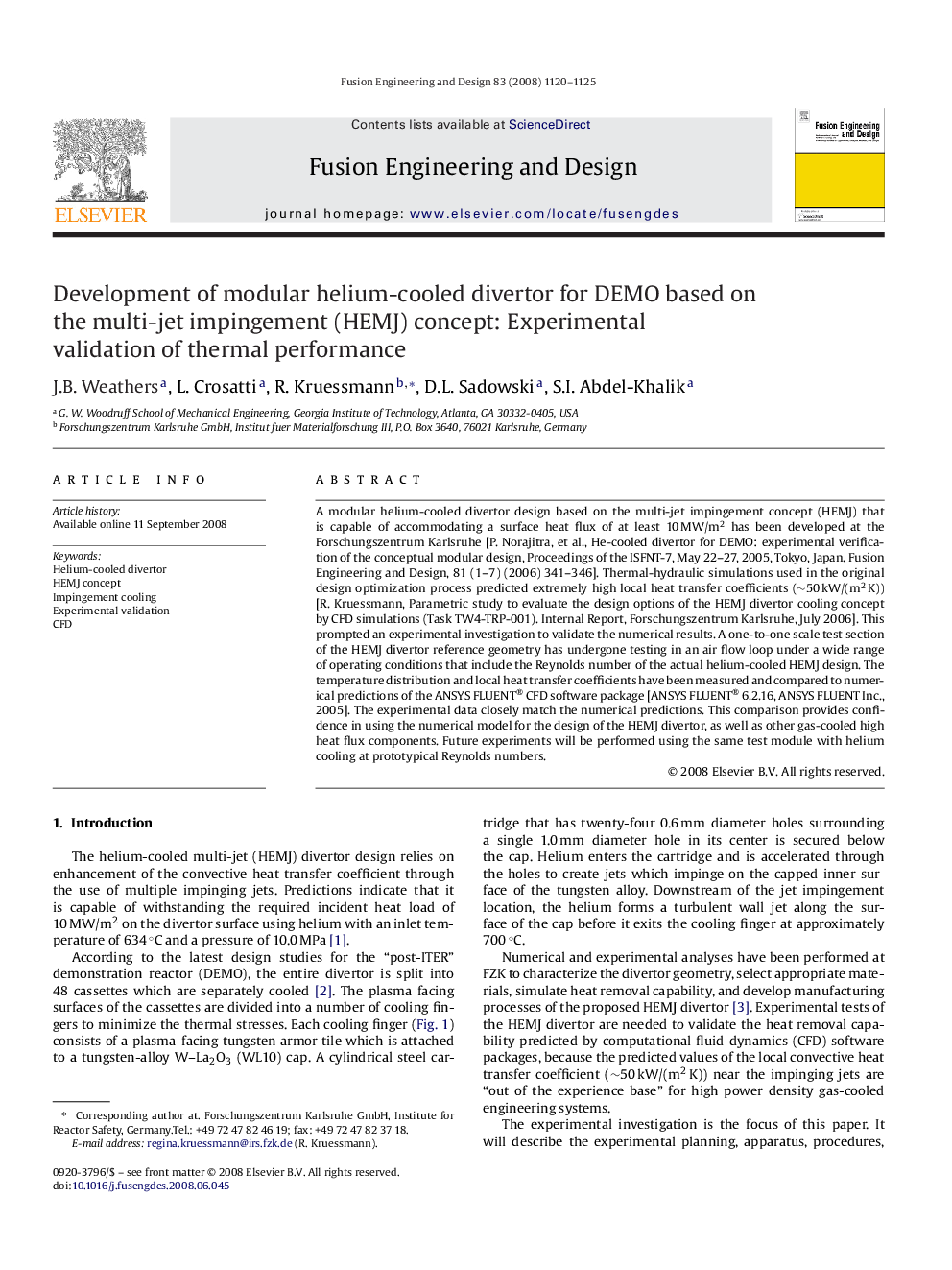| Article ID | Journal | Published Year | Pages | File Type |
|---|---|---|---|---|
| 273048 | Fusion Engineering and Design | 2008 | 6 Pages |
A modular helium-cooled divertor design based on the multi-jet impingement concept (HEMJ) that is capable of accommodating a surface heat flux of at least 10 MW/m2 has been developed at the Forschungszentrum Karlsruhe [P. Norajitra, et al., He-cooled divertor for DEMO: experimental verification of the conceptual modular design, Proceedings of the ISFNT-7, May 22–27, 2005, Tokyo, Japan. Fusion Engineering and Design, 81 (1–7) (2006) 341–346]. Thermal-hydraulic simulations used in the original design optimization process predicted extremely high local heat transfer coefficients (∼50 kW/(m2 K)) [R. Kruessmann, Parametric study to evaluate the design options of the HEMJ divertor cooling concept by CFD simulations (Task TW4-TRP-001). Internal Report, Forschungszentrum Karlsruhe, July 2006]. This prompted an experimental investigation to validate the numerical results. A one-to-one scale test section of the HEMJ divertor reference geometry has undergone testing in an air flow loop under a wide range of operating conditions that include the Reynolds number of the actual helium-cooled HEMJ design. The temperature distribution and local heat transfer coefficients have been measured and compared to numerical predictions of the ANSYS FLUENT® CFD software package [ANSYS FLUENT® 6.2.16, ANSYS FLUENT Inc., 2005]. The experimental data closely match the numerical predictions. This comparison provides confidence in using the numerical model for the design of the HEMJ divertor, as well as other gas-cooled high heat flux components. Future experiments will be performed using the same test module with helium cooling at prototypical Reynolds numbers.
